Table of Contents

Over the past three years, we’ve 7x our growth at uSERP, transforming from a small boutique digital PR and SEO agency to a powerhouse team committed to changing the link building narrative.
At the heart of our evolution lies core values that guide every decision we make. We bias towards action, fostering a culture of curiosity and continual learning.
We strive for daily improvement and fulfillment, harnessing the collective power of a team that’s unwaveringly committed to each other, our mission, and our company’s ambition to become a household name in SEO.
Our vision is clear and compelling: to scale rankings, traffic, and revenue for the fastest-growing companies through unattainable backlinks and experience-backed SEO strategies.
But we’re not just building an agency — we’re building people. Our vision extends to nurturing our team members and transforming entry-level learners into seasoned specialists, managers, directors, and executives.
We aim to foster a culture of ownership, teamwork, and passion — where everyone feels empowered to learn, grow, and excel. And this is our story about how we grew our team at uSERP 7x in 3 years, all while maintaining team productivity.
Here are a few quick facts:
-
uSERP launched in Q4 of 2019 with a single client.
-
In our first year, we achieved $80k MRR with three full-time people and a few part-time contractors. In 2023, we now have a 50+ person team.
-
We’ve raised $0 in funding by bootstrapping with a lean team from the ground up.
-
Our growth stems from a mix of inbound and outbound marketing/sales.
-
Our team is fully remote.
Challenges of scaling a team: navigating growth at uSERP
Scaling a team is an exciting yet complex process. And every company encounters its fair share of challenges along the way. Sadly, nobody is immune to growing pains.
As uSERP grew exponentially, we faced several hurdles that tested our resilience and adaptability.
So let’s dive into some of the common challenges businesses confront during team expansion and shed light on how these issues have impacted our journey at uSERP over the last three years.
Maintaining company culture
When scaling a team, maintaining the company culture you worked so hard to build is essential and challenging.
A strong company culture creates a sense of identity, belonging, and motivation among employees, ultimately driving productivity and success. And as new members join the ranks, there’s always a risk of diluting the core values that make your organization unique.
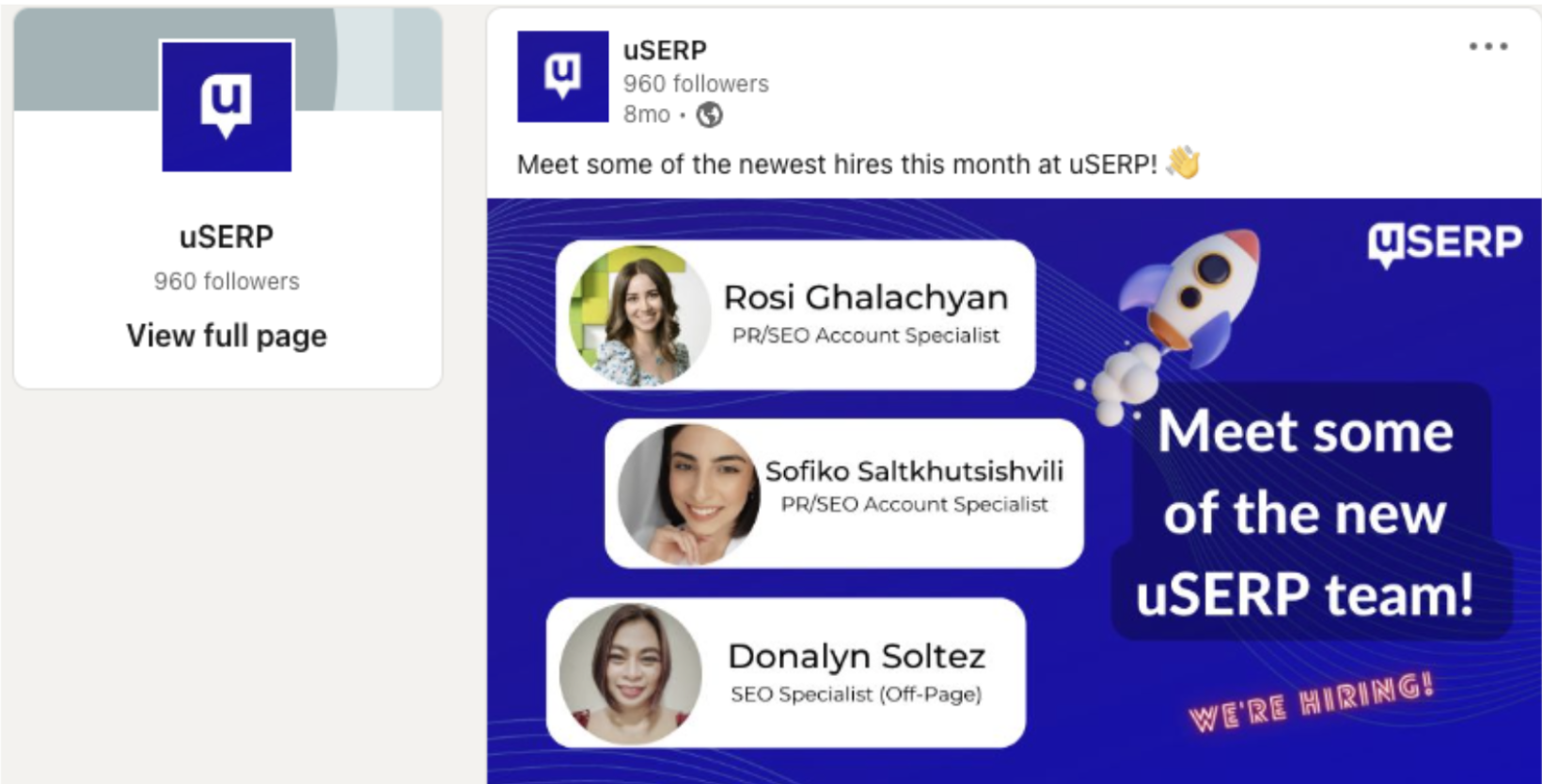
The result? Potential inconsistencies in behavior, expectations, and decline in the overall work environment.
Nurturing culture and fostering a sense of belonging among team members sits within our core values at uSERP. So from day one, we’ve always prioritized maintaining this culture by:
-
Organizing team-building events (online cooking classes, trivia, etc.) and building open communication channels.
-
Communicating our mission, vision, and values from day one.
-
Focusing on hiring people that align with our company culture.
Ensuring effective communication
In a remote team setting, communication is the linchpin that holds together seamless operations, fruitful collaboration, and a cohesive work environment.
As the size of your team expands, it becomes more difficult to maintain clarity and understanding among an increasingly diverse group of individuals.
While small teams can often rely on casual Slack messages and impromptu meetings to stay informed and aligned, this approach becomes increasingly inadequate as your team grows.
For instance, as our team at uSERP expanded across borders, we encountered communication challenges requiring us to adapt our strategies — especially as we onboarded employees in virtually every time zone.
Navigating the complexities of communication in a larger remote team requires a more structured and strategic approach (e, g. daily check-ins and product management tools) to ensure continued success.
Balancing workload and resources
Teams thrive with a delicate equilibrium of workloads spread across all members.
As a leader, the last thing you want is to pile all your work on one person’s plate. Even if they are one of the team’s strongest members, they’re still human and can only handle so many tasks at once.
Avoid this bottleneck by delegating and spreading the workload as evenly as possible. Of course, this process is easier said than done.
And once you introduce new tasks and responsibilities (not to mention headcounts), it demands another skillful rebalancing of workloads and resources.
The goal? Maintain balance so your entire operation continues functioning like a well-oiled machine, despite the growing demands.
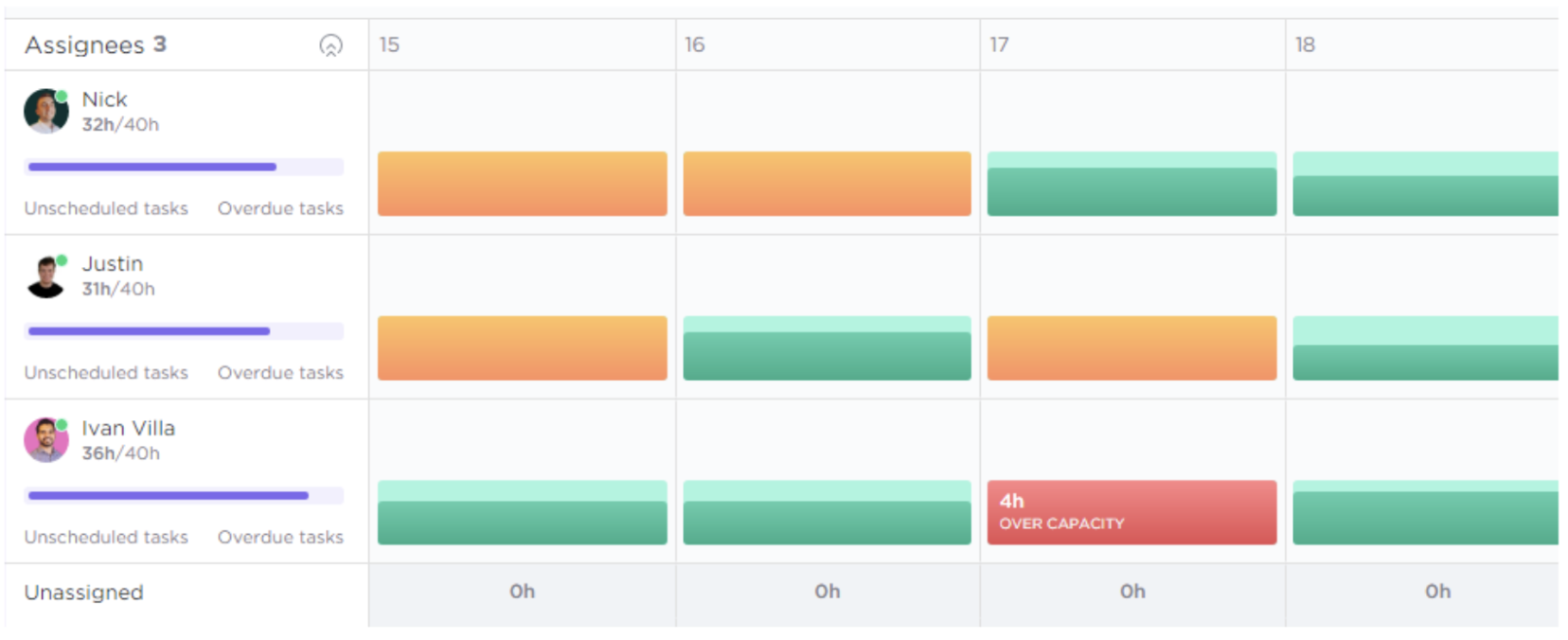
As we continued to grow different teams within our organization, we faced the challenge of making sure that each team (and member of that team) had the right balance of workload to achieve peak performance without sacrificing the quality of work.
It takes a bit of trial and error to get it right. And honestly, it’s still something we continue to perfect. To help tackle this issue, we:
-
Invest in technology and automation to streamline processes and create a structured onboarding process.
-
Provide training and development opportunities for our team to enhance their skills.
-
Conduct regular workload assessments to identify bottlenecks and inefficiencies.
Knowing when to hire
Discerning the optimal time to bring in new team members is a pivotal decision when scaling a team. This simple decision, on the surface, carries significant implications for the success of your growth strategy.
Hire too soon, and you may strain your financial resources, putting undue pressure on your budget. Wait too long, and your existing team could become overburdened, leading to burnout and a potential dip in productivity.
Recognizing that growth can be unpredictable, we adopted a flexible hiring strategy. A mix of full-time, part-time, and contract positions allows us to adapt swiftly to fluctuations in demand.
And keeping a pulse on existing team workloads and their capacity has worked wonders. If the workload consistently exceeded capacity, it indicated that our team was stretched too thin, and we knew it was time to bring in reinforcements.
Did we get the hiring decision right every quarter? No. But over the long haul, we’ve started identifying patterns that signal it’s time to hire. Some of those things include:
-
An uptick in customer complaints or negative feedback.
-
Team members are consistently working overtime.
-
Employee stress levels are at an all-time high.
-
There’s no capacity to take on new projects.
-
Project delays due to missed deadlines.
-
There’s a decline in the quality of work.
While we didn’t make the right hiring decisions every time, recognizing these signs helped us make more informed decisions and better manage our team’s growth.
Retaining top talent
Hiring new members takes center stage in the quest to scale a team. However, an equally crucial yet sometimes overlooked aspect is the retention of your top talent.
Why? Holding onto your high-performing employees is the secret recipe for enhancing your team’s productivity, continuity, and morale. They inspire other team members and always bring their A-game.
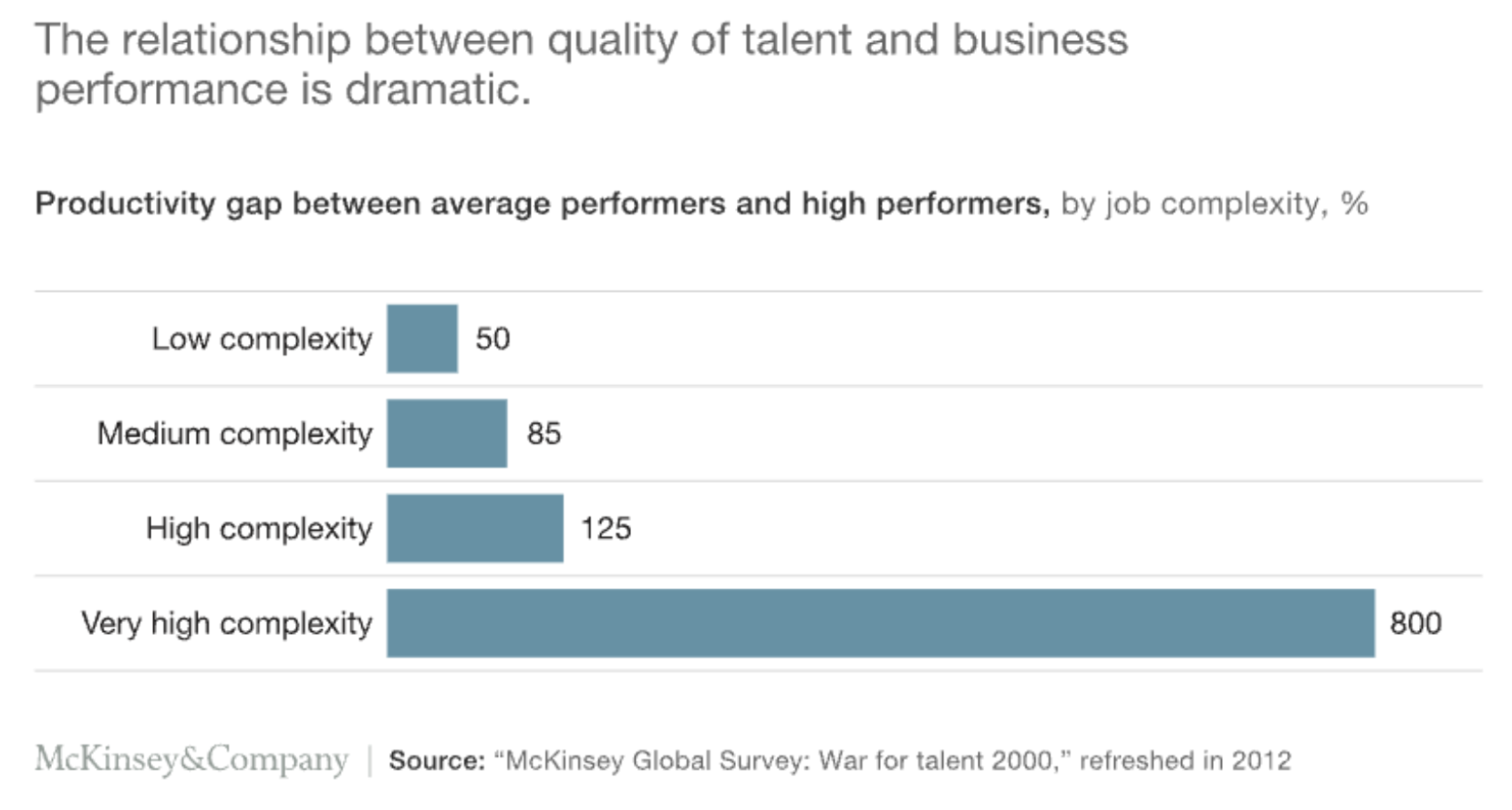
And not to mention that losing a high-performing team member can be a significant setback for any organization.
The turnover costs go beyond the financial implications of recruitment and training. You’re also losing accumulated knowledge, introducing disruption to team dynamics and the potential to impact client relationships.
At uSERP, we’ve learned that employees will stick around for the long run when they feel valued. Small details make a difference — like a thank-you email after a hectic week.
Never underestimate the power of recognition for hard work and achievements. Invest in their growth if you have a shining star on your team.
5 strategies for maintaining productivity while scaling
As we embarked on the journey of team expansion, maintaining productivity was a challenge that commanded our attention daily.
Rapid growth, while exciting, can stir the waters, disrupting established workflows and impacting team dynamics. However, we knew we could scale with the right formulation of strategies in place.
Here are the five key strategies that have guided uSERP in maintaining productivity throughout our rapid growth.
Strategy #1: Hire right
The recruitment process is the first building block in constructing a cohesive team and preserving your company’s culture.
As we mentioned earlier, we place immense importance on hiring the right talent, recognizing that our team’s productivity and our company’s success hinge on this critical process.
So we cast our recruitment net wide, hiring international talent as independent contractors and posting on various job search sites to attract a diverse pool of candidates. This approach has allowed us to bring together a fully remote team that’s skilled and brings diverse perspectives, enriching our problem-solving and innovation capabilities.
Our hiring process is thorough yet efficient. The average time to fill a position is about a month, including paperwork and determining start dates. However, we maintain the flexibility to accelerate this process as needed. We also typically have candidates on deck, allowing us to respond swiftly to emerging needs.
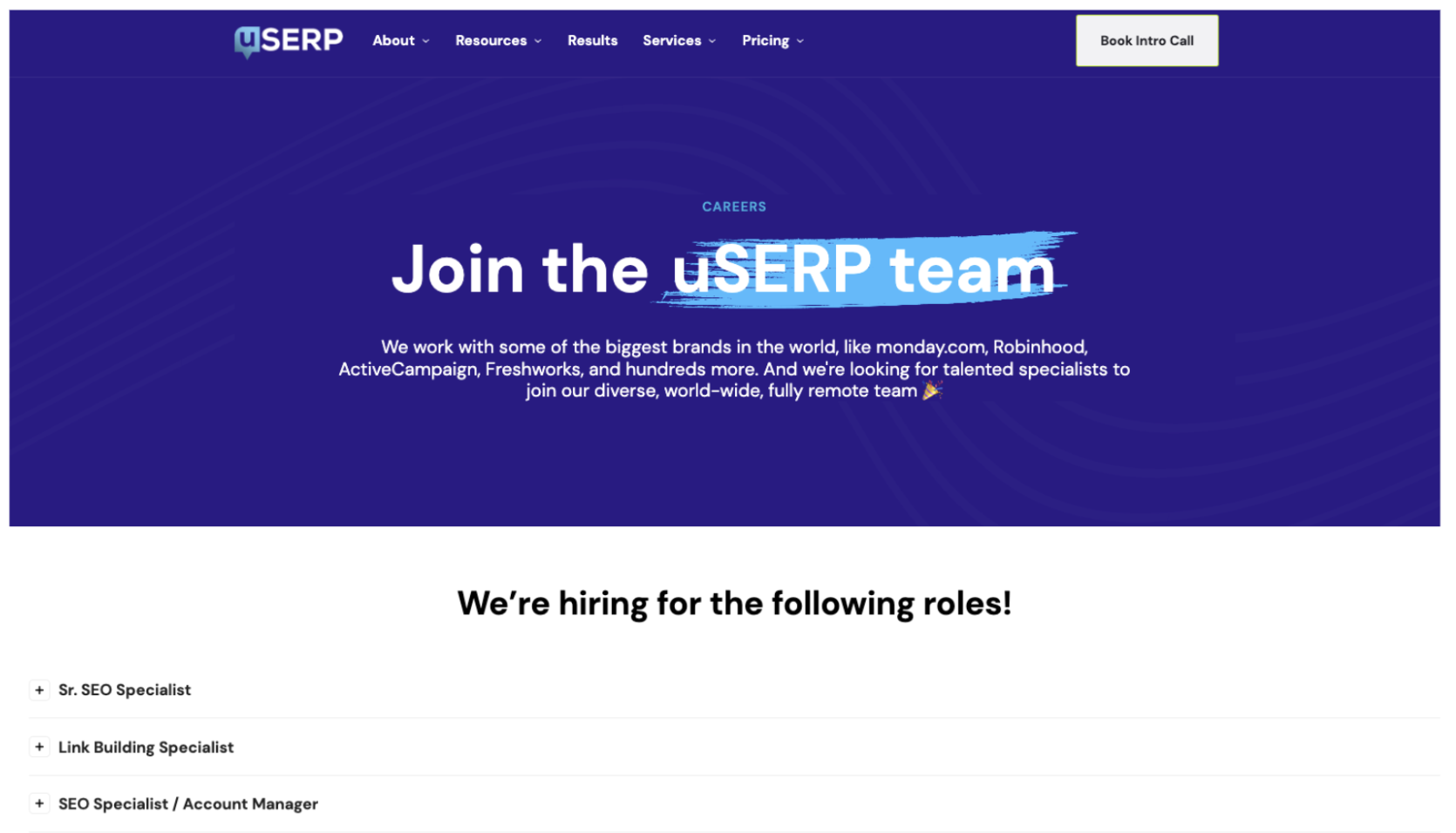
Over the last year, our offer acceptance rate has hovered around 75%, indicating that our value proposition resonates with potential hires. And our new hire turnover rate over the last four years has been maintained at a low of 9.09%.
A year-by-year breakdown shows a declining trend in voluntary new hire turnover:
-
20% in 2020 (5 hires, 1 exit after 2 years).
-
0% in 2021 (3 hires, 1 involuntary exit within the same year).
-
3% in 2022 (25+ people, 1 voluntary, 2 involuntary exits within the same year).
Importantly, we haven’t lost a new hire yet in 2023. It speaks volumes about our hiring process’s effectiveness, supportive onboarding (more on that in a bit), and work environment.
At the end of the day, “hiring right” isn’t just about filling a vacant position. It’s about finding the right fit for your team and culture, which demands careful consideration and strategic action.
Strategy #2: Structured onboarding process
Did you know that organizations with a robust onboarding process can increase new hire retention by 82% and improve overall productivity by 70%?
It might sound too good to be true, but a well-structured onboarding program can help new team members:
-
Feel more connected to the team.
-
Contribute to productivity sooner.
-
Get up to speed faster.
And we’ve experienced firsthand the transformative impact of a solid onboarding process on team productivity. So what does it look like?
Our onboarding process is meticulous and thorough, spanning three months:
-
New hires undergo a structured two-week training program featuring tests and exercises in each module.
-
Check-ins with direct managers conclude each module, offering clarification and immediate feedback.
-
New hires are encouraged to track their time during training to identify time-consuming tasks and potential areas for improvement.
-
We gradually introduce them to their roles, fostering confidence and competence.
-
The average training time per employee is 2-3 weeks, but highly experienced hires often finish sooner.
This structured onboarding program accelerates new hire integration, expedites their time to productivity, and nurtures a culture of continuous learning and improvement.
But it wasn’t always sunshine and rainbows. Navigating the landscape of onboarding tools was a daunting task. What proved to be a perfect fit for one startup fell short for us. That’s where platforms like Matchr come in handy, offering bespoke solutions that align with your specific needs.
Since we focus on robust training protocols, investing in a learning management system (LMS) that could significantly improve our onboarding process made sense.
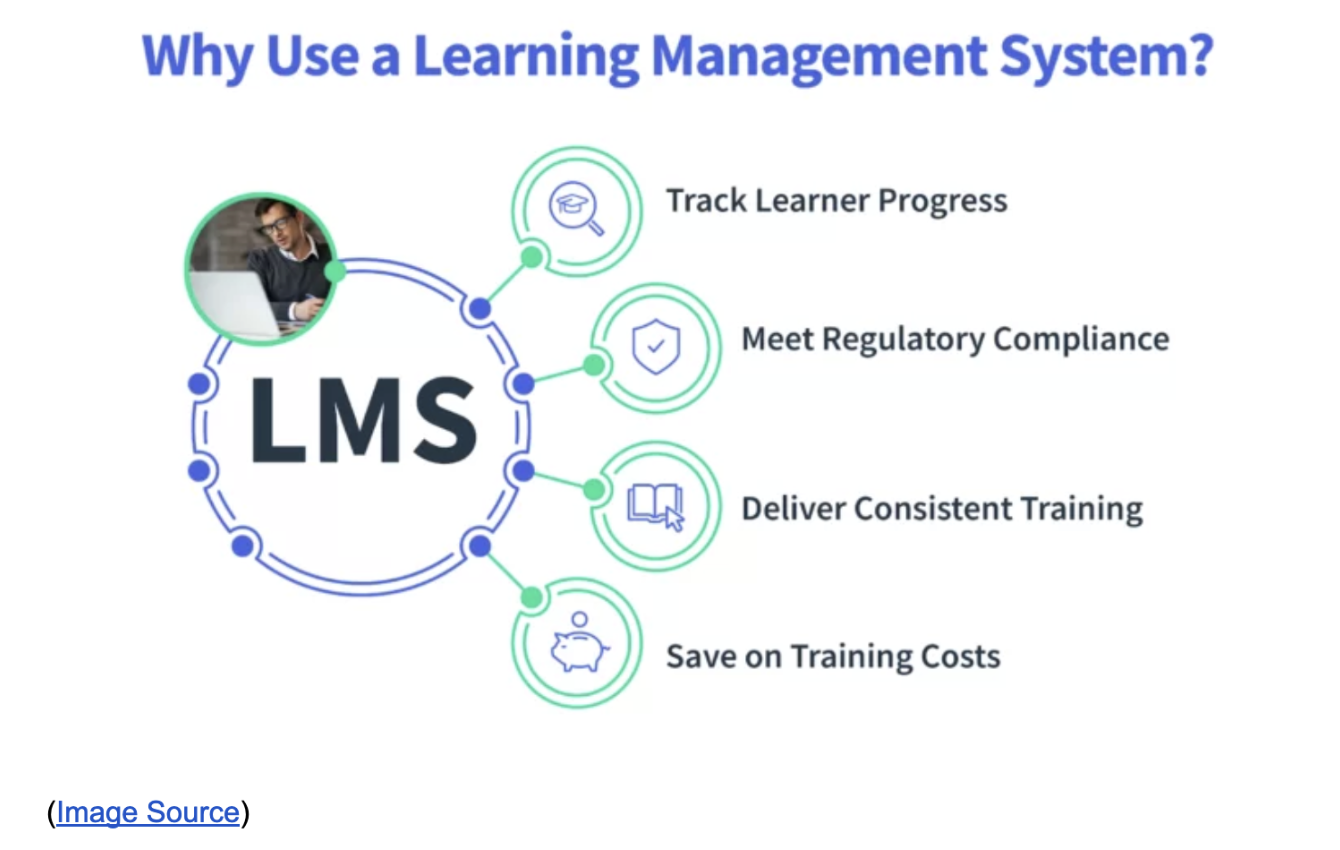
But not all LMSs are created equal. Matchr helped us find the perfect solution that integrated our existing tools and checked every box. This extra attention to detail has boosted the effectiveness of our training programs tenfold.
The takeaway? Don’t settle for a generic, one-size-fits-all solution. Instead, entrust the experts to guide you in selecting the ideal software that perfectly aligns with your unique needs.
Remember, the right tools can significantly enhance your onboarding process, accelerating new hire integration and boosting productivity.
Strategy #3: Clear communication
The truth is that achieving your goals can quickly become an uphill battle without effective communication. Simple collaborations morph into hurdles, misunderstandings creep in, and team morale takes a hit — a combination far from conducive to business growth.
With uSERP being a fully remote team, we understood from the start that we faced an added challenge in establishing clear lines of communication. The convenience of turning to a coworker in a neighboring cubicle for quick questions isn’t an option when team members sit across the globe.
But, understanding this reality allowed us to create proactive solutions and maintain the seamless collaboration our team is known for. We made it a priority to give every member of our team the information they need to do their job effectively while also feeling heard and understood from afar.
For instance, our department heads host daily “office hours” via Slack. These open-door periods encourage a safe space for team members to ask questions, seek advice, or discuss ideas. It helps to promote a culture of transparency and mutual respect.
In addition to these daily collaboration touchpoints, we also host weekly team check-ins. These virtual gatherings allow everyone to align on priorities, address any issues that pop up during the week, and celebrate successes.
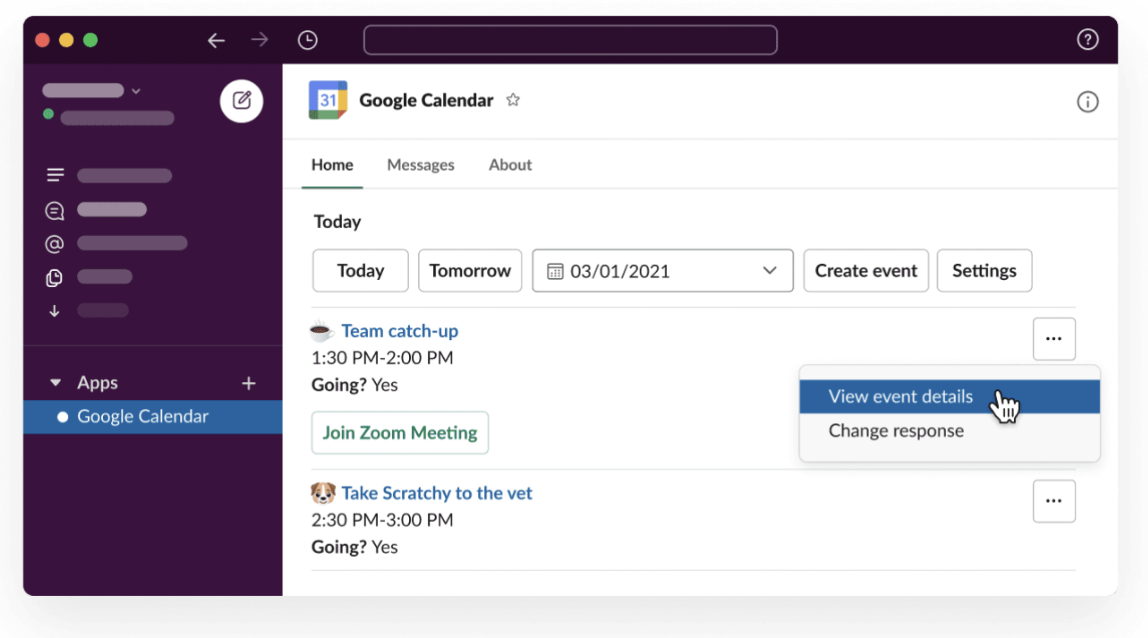
We strongly believe that teamwork makes the dream work. And these weekly check-ins allow everyone to contribute to the overarching team and organizational goals.
And lastly, we make it a priority to conduct quarterly performance reviews. Studies show that 92% of employees want feedback more often than the traditional annual review.
So we’ve significantly increased the frequency of our performance reviews to give our employees the regular feedback they crave and deserve.
Remember, performance reviews aim to assess past performance and keep communication channels open. They should guide employees toward their career goals and, ultimately, enhance productivity and job satisfaction.
As we’ve scaled, we’ve found that clear, consistent communication isn’t just beneficial — it’s essential. It helps maintain productivity, promotes a positive work environment, and makes sure everyone feels connected, engaged, and part of the uSERP family.
Strategy #4: Streamlined processes
It’s 2023, and we have a wealth of technology designed to simplify our lives, optimize our routines, and enhance our productivity.
But the true challenge lies in identifying and integrating these tools to minimize manual tasks and make workflows as efficient as possible. After all, time is a nonrenewable resource, and we at uSERP are committed to using it wisely.
As our team grew, we swiftly recognized the importance of streamlined processes in maintaining productivity. It wasn’t enough to add more members to the team — we needed our operations to be as efficient and effective as possible, adapting with us as we scaled.
So we took decisive steps to optimize our processes. Here’s how:
-
Minimized team meetings across different time zones and prioritized asynchronous meetings via Slack.
-
Replaced unnecessary meetings with Loom videos, allowing team members the flexibility to consume and digest information at their convenience.
-
Created comprehensive Standard Operating Procedures (SOPs) using Notion to provide a centralized, accessible resource for every team member.
-
Harnessed the power of project management tools like ClickUp and Pipefy to maintain a clear overview of our ongoing projects and hold everyone accountable for hitting project deadlines and goals.
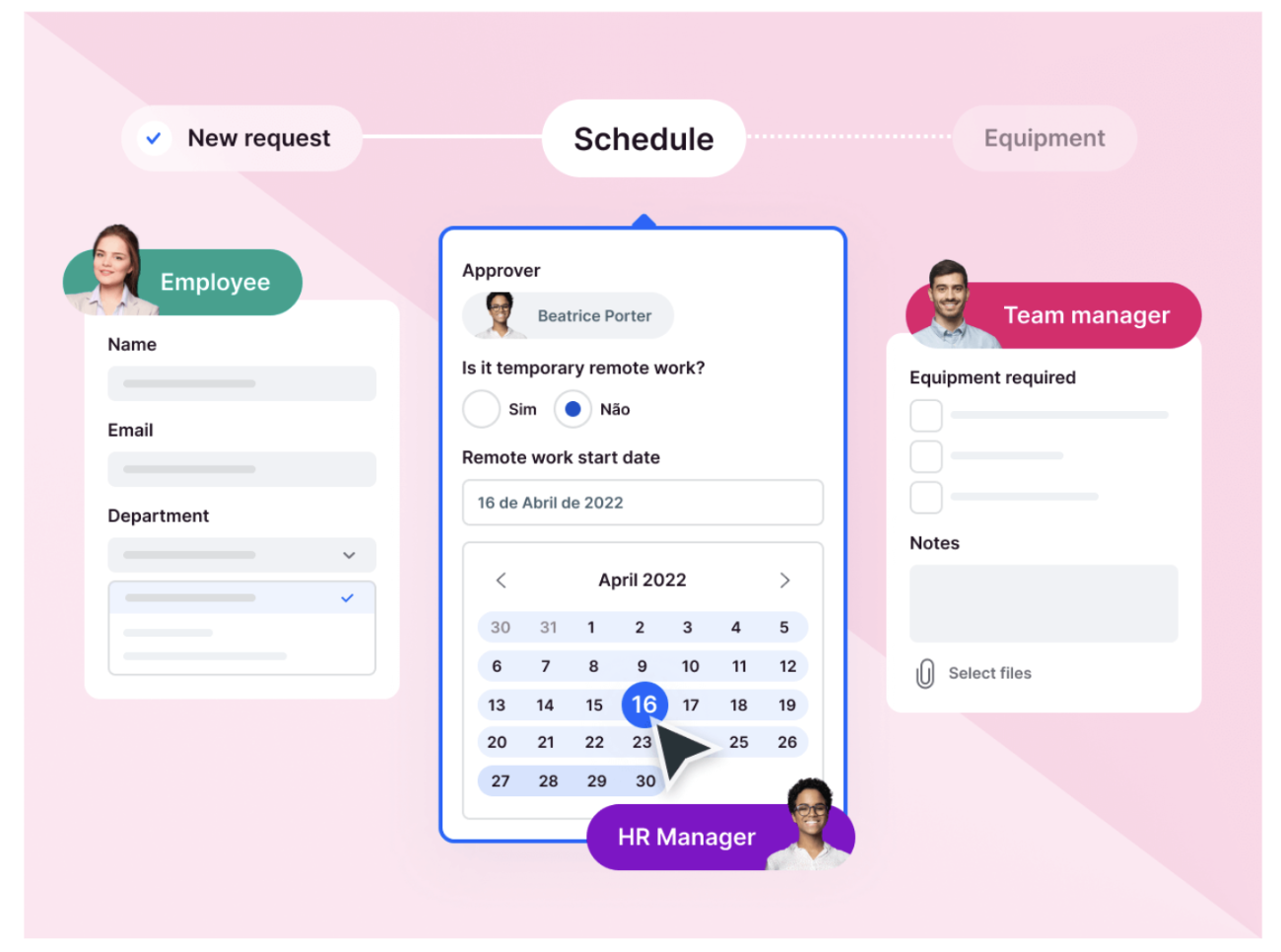
Scaling isn’t just about growing in size — it’s about growing in efficiency, too. As technology advances, there’s always a faster way to do something.
So never stop innovating. Continually assess your workflows and seek opportunities to improve repetitive tasks with business process automation solutions. With this mindset, you’ll be surprised at how easy it is to maintain and even boost productivity as your headcount grows.
Strategy #5: Empowering team members
An empowered employee is a productive employee.
Simply put, empowerment breeds initiative, resilience, and a commitment to quality. It’s not enough to have more hands on deck. Each pair of hands must be capable, confident, and invested in the task.
We love empowering our employees at uSERP. It’s our bread and butter. And we feel good doing it.
For instance, we’ve discarded micro-management. Instead, we communicate our expectations and deliverables, leaving team members to manage their own time and tasks.
This simple approach instills a sense of trust and responsibility in our team members. Plus, nobody likes a micromanager. It’s stressful and a major cause of burnout. Why do you think turnover rates are so high in the financial industry?
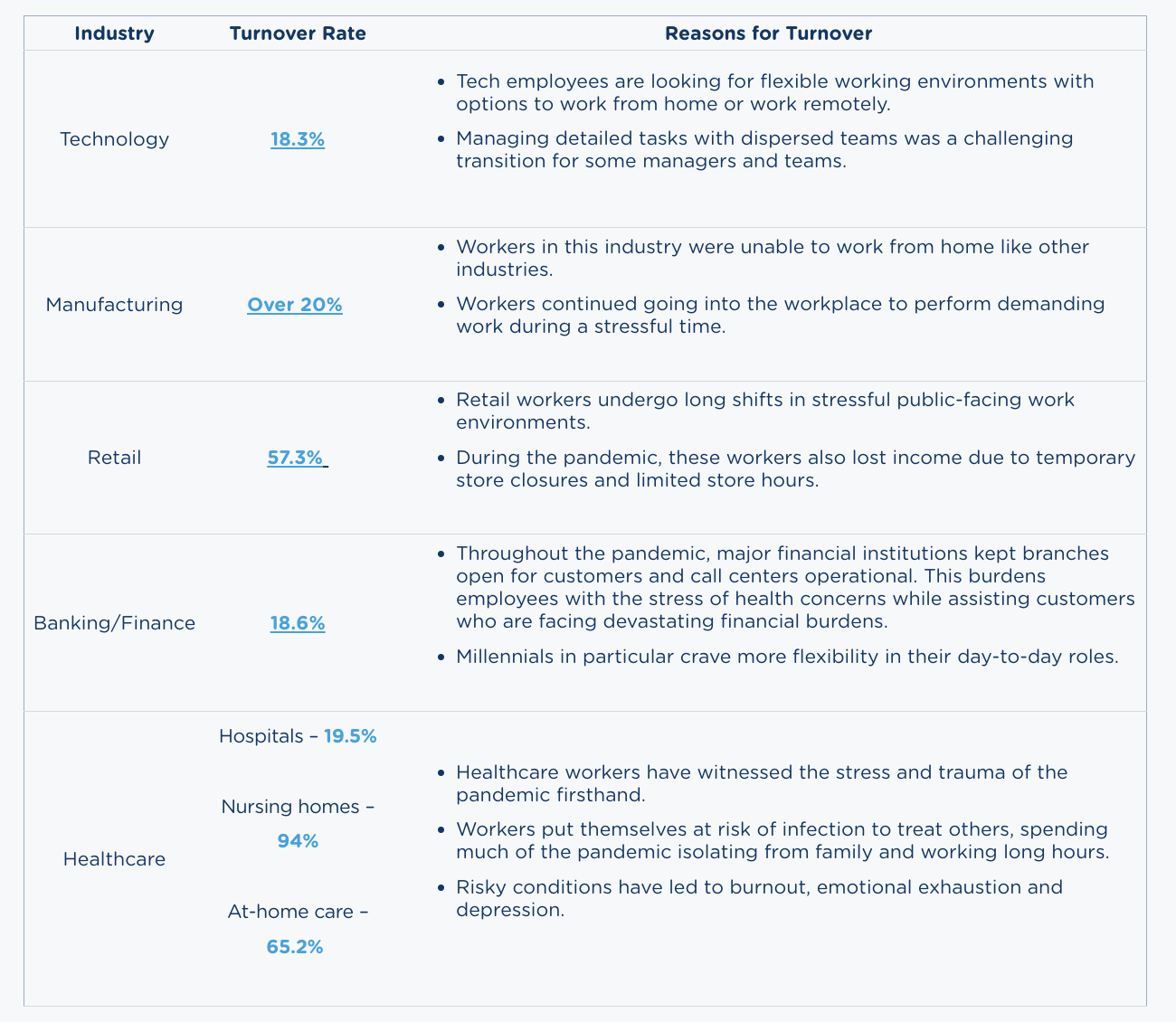
We also champion flexibility through our ‘work-from-anywhere’ policy, accommodating all time zones. This flexibility underscores our trust in our team members’ ability to meet their responsibilities, regardless of location. It’s a clear message: we believe in your ability to deliver.
And, of course, continuous learning is another cornerstone of our empowerment strategy. Regular learning and question-and-answer sessions allow our team members to hone their skills, broaden their knowledge base, and raise queries in a supportive, collaborative environment.
And let’s not forget the value of team building. Our events, designed to be inclusive across different time zones, foster a sense of camaraderie and shared purpose. They’re not just a break from routine — they’re a critical tool for building a coherent, cooperative team.
And most importantly, they’re fun. Yes, we did a virtual empanada baking class.
An empowered team doesn’t just do more. It does better. And that’s a strategy worth investing in.
Results
As we reflect on our journey over the past three years, the results of our meticulous efforts to maintain productivity while scaling are clear and quantifiable.
We’ve not only maintained productivity but also significantly enhanced it, and we have the numbers to prove it.

Starting with employee retention rates, a key indicator of a productive and content workforce. Since 2020, our average retention rate has remained strong at 91%. Out of around 55 total hires, only five have left the company.
A low turnover rate is a testament to our commitment to fostering a supportive, engaging, and empowering work environment in which people want to be a part.
Another key marker of our success lies in our internal promotion rate. Let’s break it down:
-
A remarkable 81.25% of senior and leadership roles were filled by individuals promoted from within our organization.
-
Over the past four years, 25% of our team, now around 50 people, have received promotions.
-
Looking back at 2021, when our team was composed of eight individuals, excluding the two founders, we’re proud to say that 75% of those team members have been promoted.
-
In 2022, we hired over 25 individuals. From that pool, we’ve already promoted 30%.
These stats highlight our commitment to nurturing and rewarding our team’s talent and giving credit where credit’s due.
Empowerment, communication, strategic hiring, and efficient processes aren’t just strategies for us — they’re our guiding principles, driving us forward to continued success.
Start maintaining team productivity in your organization today
As we look to the future, we’re excited to continue scaling, evolving, and achieving with our fantastic team at the heart of everything we do. Without our employees, we wouldn’t be where we are today.
Did we do everything right? Absolutely not. But we ultimately found five simple strategies for maintaining productivity that did work. And since then, we’ve doubled down on these initiatives and continue to ride the momentum.
Will these strategies work for your business? Some of them, yes. All of them? Maybe not. But it’s an excellent foundation to help get you started.
Never lose sight of your organization’s core values. These will keep you humble and honest as you scale. If you keep these at the forefront of everything you do, you’re bound for success.
And don’t forget that maintaining team productivity is a learning curve. Be patient. Use data to help you drive decisions. We believe in you. Maximum productivity is right around the corner.




